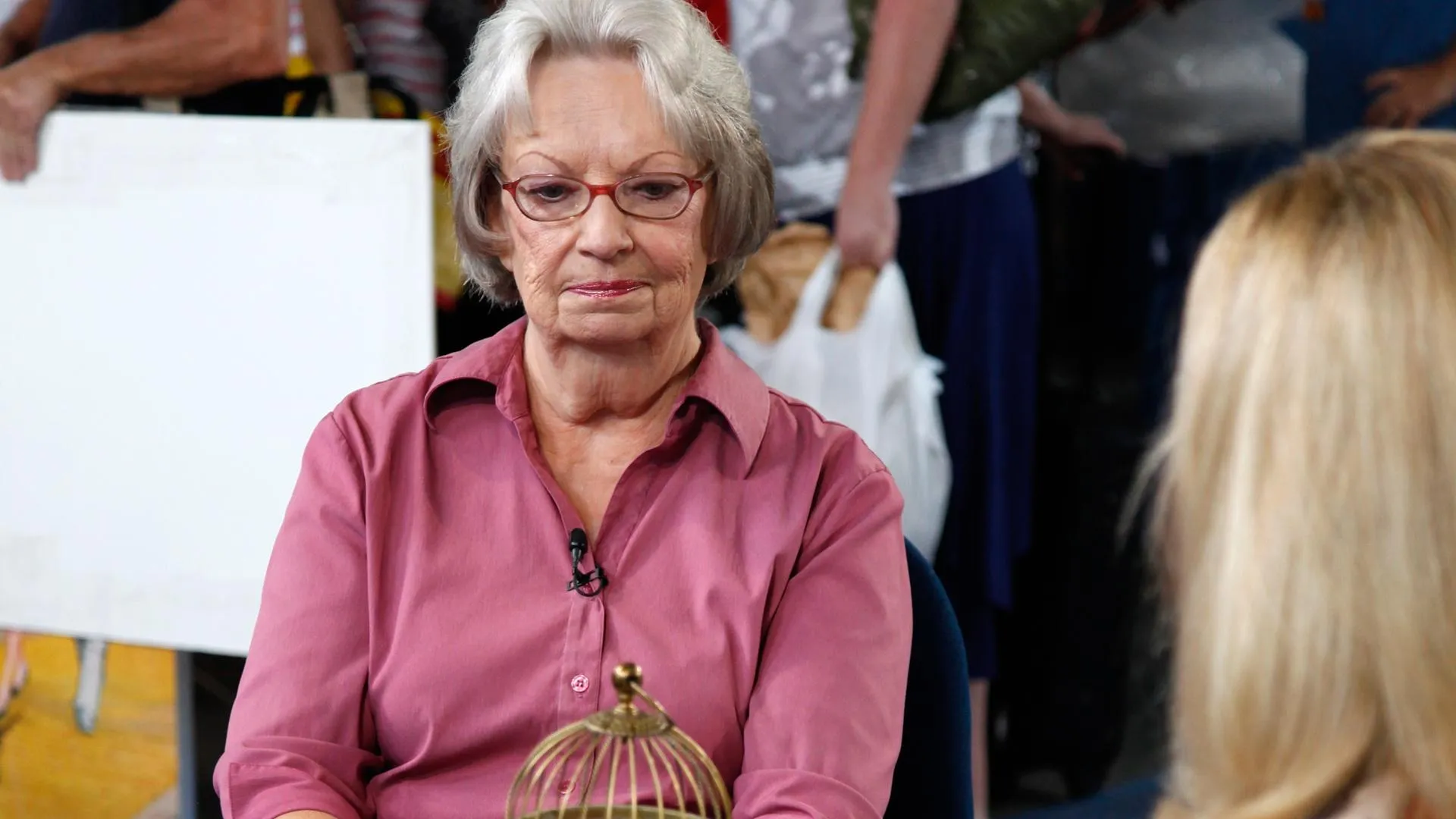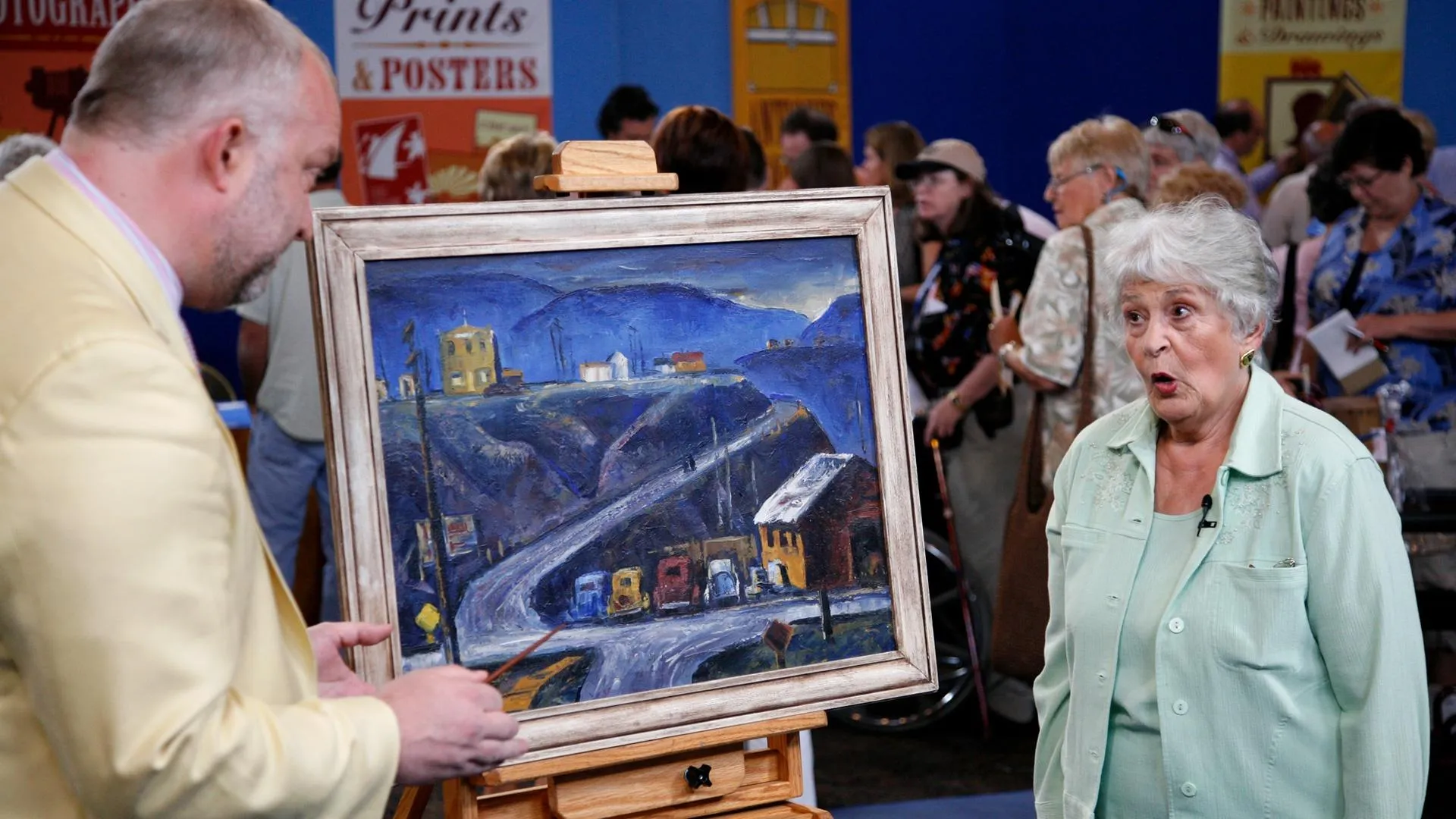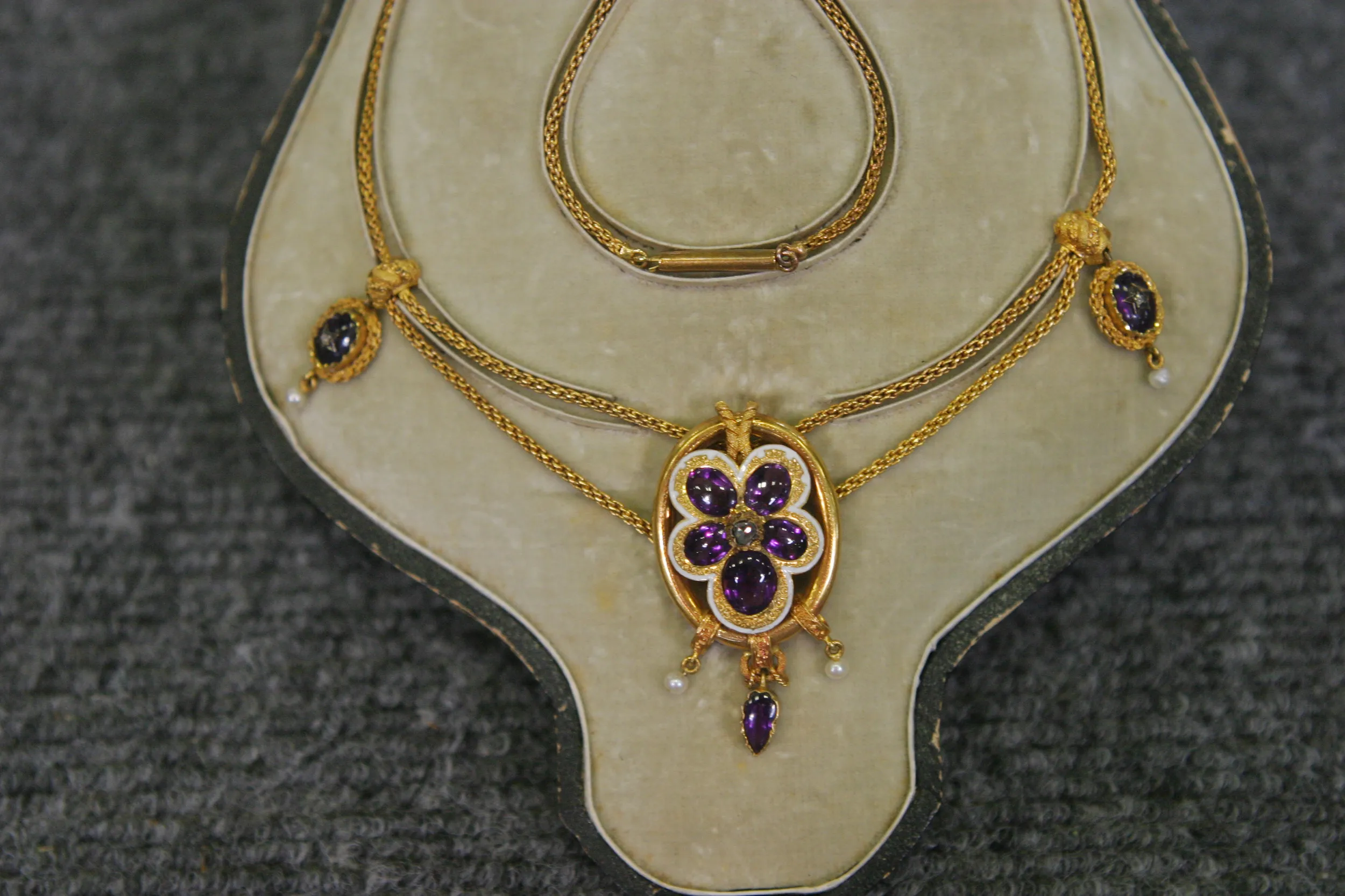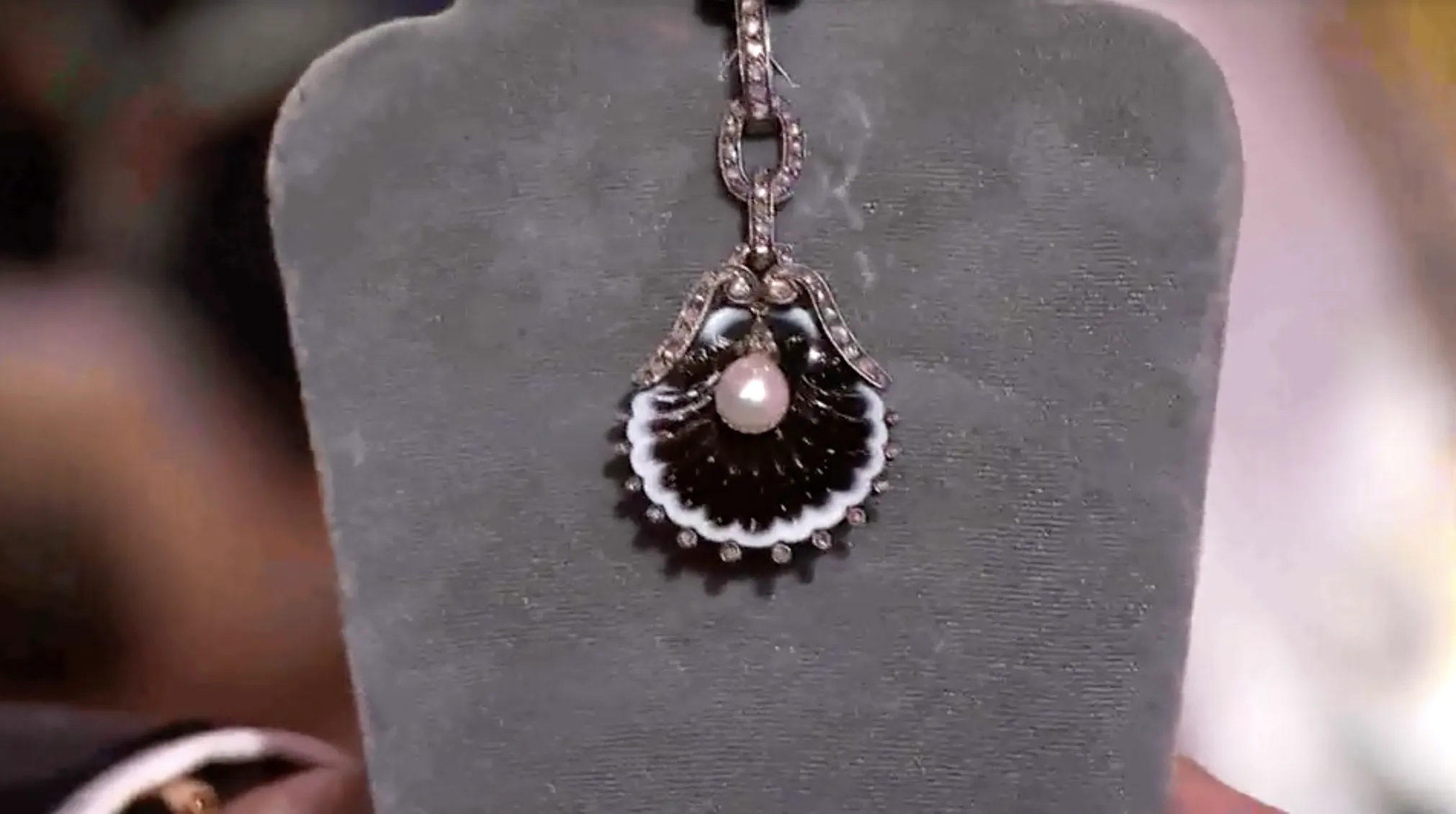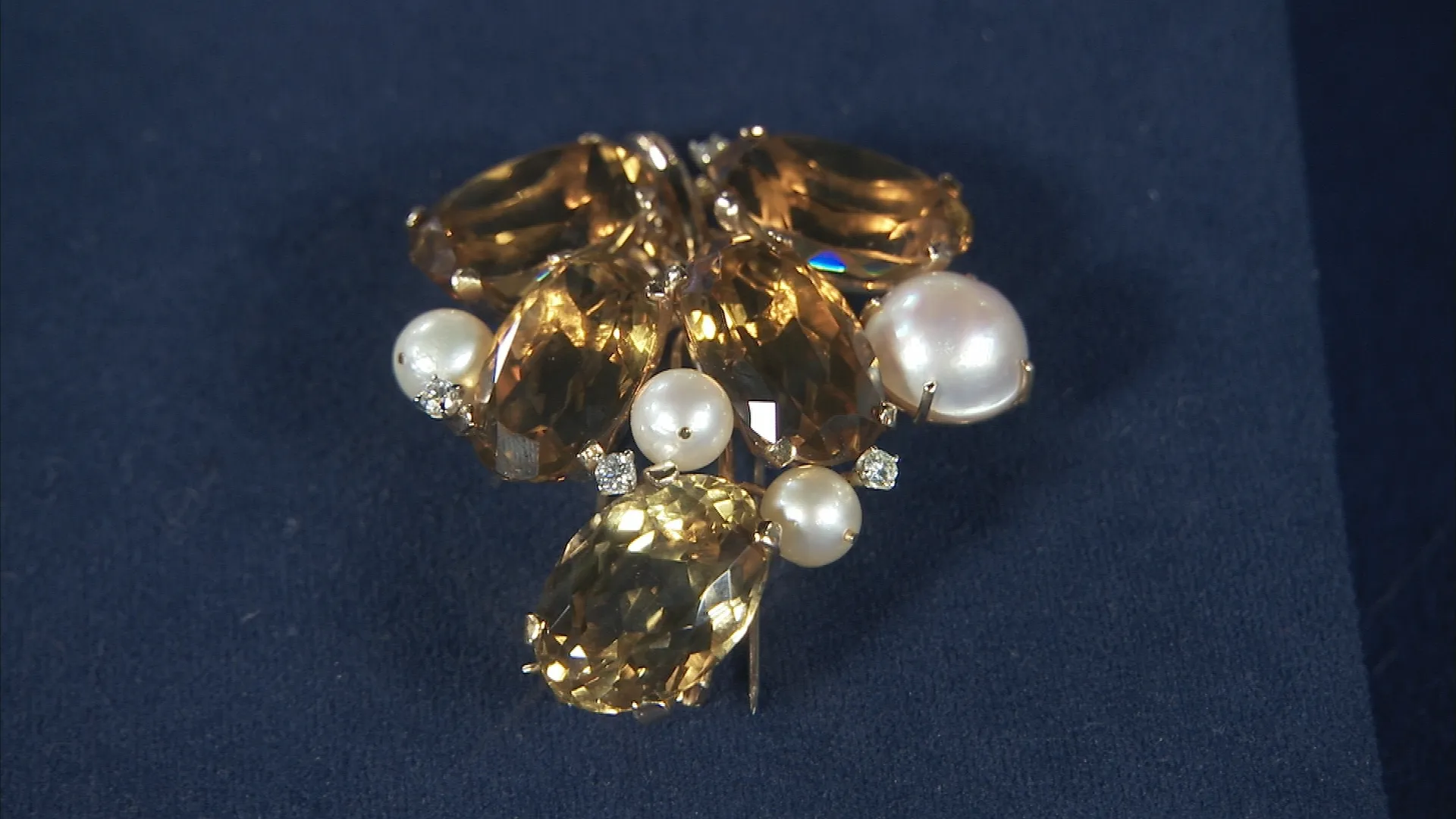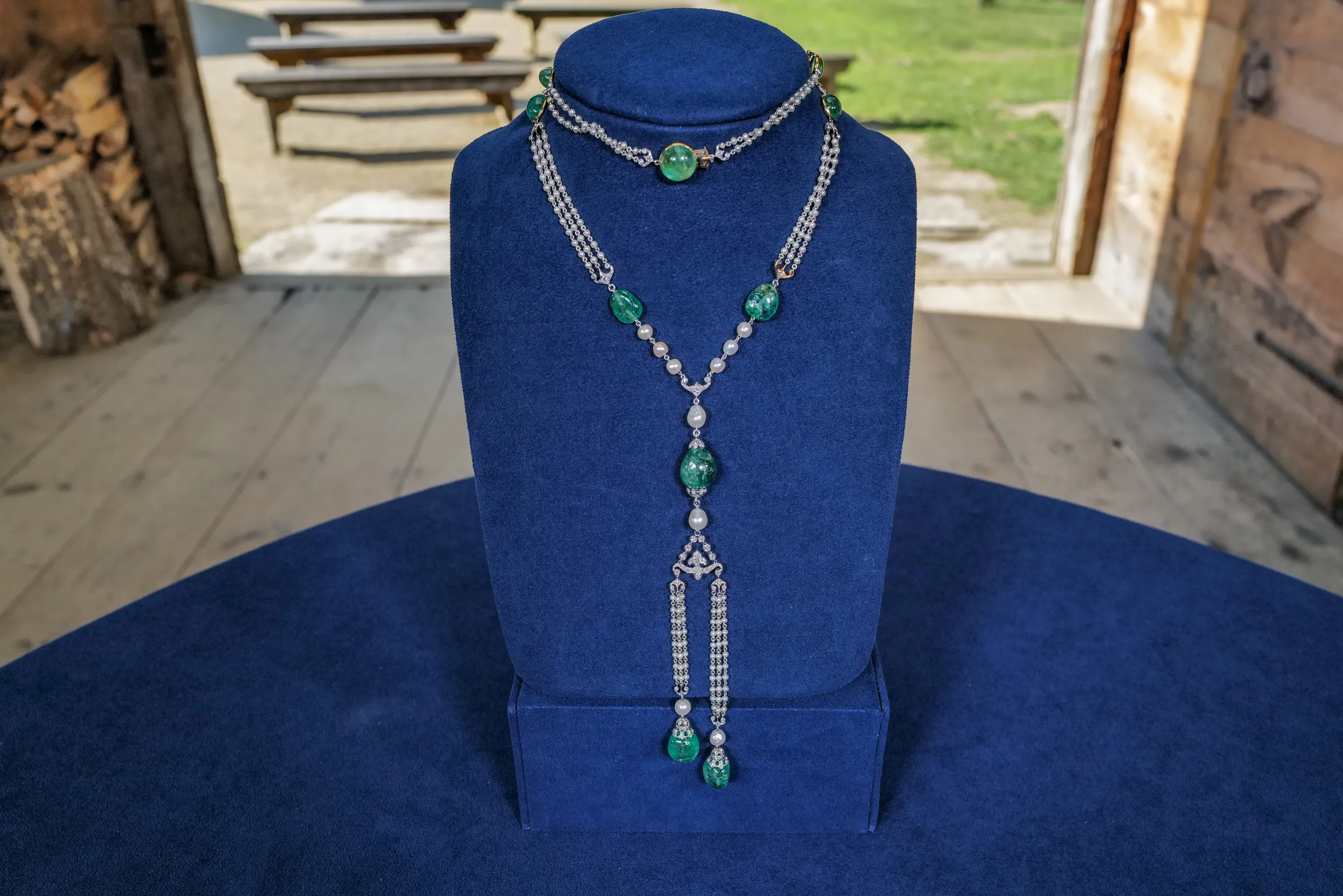GUEST: It actually belonged to a friend of mine's mother. She lived in California. And her mother passed away some time ago. And when they were going through her mother's things, they came across a number of items-- this, some clothing and things-- and they passed them on to me. They said, me being the flamboyant person I am... (laughing) ...that possibly I might enjoy it, and I just love it. I don't know anything about it other than it was given to my friend's mother by her next-door neighbor many, many, many years ago.
APPRAISER: The piece is from India. You might characterize this as what we call Mughal jewelry. Although this wasn't a piece owned by the original Mughals from the 17th century, it's hard to, many times, date these because these types of pieces are still being made today in the same style with the same design motifs. It's based on the quality of this piece, the level of craftsmanship and the intricate interweaving of motifs and symbolism that leads me to believe that it is from the late 19th century to the early 20th century. We have a number of plaques here, and these plaques have enamel on them, predominantly white, red and green enamel. We have some spheres that also have the enameling with the same color motifs. And we have some pearls here as well. Now, these pearls are natural. That means that they were not cultured. These pearls probably came out of the Indian Ocean. If you notice, there are these motifs of tigers in the jungle. And these pendants, they're in the shape of what would be a traditional tiger claw. In Mughal jewelry, sometimes you find the actual tiger claws mounted into the pieces. The tiger claws themselves were used as a symbol for protection. So we've got a great combination of symbolism and shape and form in the piece. Now, the great part: this piece is reversible. This is actually the back of the necklace. This is the front side of the necklace. And on this side we have a collection of gemstones set into the piece. The red stones are rubies. We have topaz, colorless sapphire, emerald, sapphire, diamond, cat's eye, coral and ruby. These type of necklaces were many times worn during a wedding ceremony. This would have been part of the dowry that was created for the bride. But this is a particularly fine example. Do you have any sense of what the value of this would be?
GUEST: Well, when you asked me if I'd consider going on TV, my heart kind of jumped. And I thought either it's really cheap costume jewelry or it's a really nice piece of jewelry, so... I'm hoping it's a really nice piece of jewelry.
APPRAISER: Well, it is a really nice piece of jewelry, and value for retail replacement would be between $12,000 and $15,000.
GUEST: Oh, wow. Oh! I'm so...
APPRAISER: That good?
GUEST: That's wonderful! Thank you.
APPRAISER: It's a beautiful, beautiful example.
GUEST: Oh, wow.

